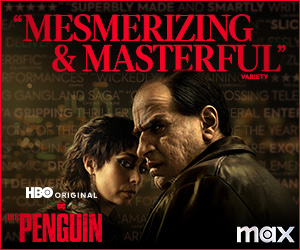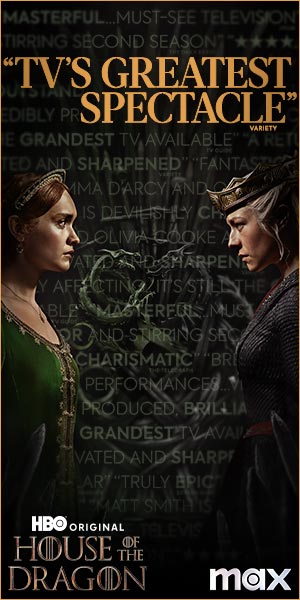VFX Voice: What led to your first job?
Cowan: Once I had decided to focus on computer graphics, I needed to figure out a way to break into the very small Australian industry. I was fortunate enough to hear a presentation by a former student, Harry Magiros, who had started his own company selling computer graphics hardware and software (Prisms/Silicon Graphics). He said during the lecture that he was looking to employ an assistant, and I leapt at the opportunity, practically sprinting up to the stage to speak to him after it was over.
VFX Voice: What type of VFX had the biggest impact on you?
Cowan: I have a huge love for what we would term “invisible VFX,” which seems like a complete paradox. Almost all films have some VFX, and most of it is not meant to be seen at all. To me, that is the ultimate illusion – being able to trick an audience so thoroughly that they don’t even realize the image has been completely altered. Some of my best work has been in this area.
VFX Voice: Did you have a mentor?
Cowan: Harry was an excellent mentor, especially on the technical side of things. He was an artist before he set up his own company, so he knew what he was talking about.
VFX Voice: What did you learn the first few years on the job?
Cowan: I learned fairly quickly that I wanted to go client-side and become an artist, rather than a support guy. I went to work for some other post-production companies in Australia like Acme Digital and Foxtel, and learned about being an artist and how to work with clients along the way. Many of the people I worked with then now work for great companies like Weta and ILM, and they remain good friends. I also learned that if I really wanted to do film VFX work, I would have to leave Australia. Most of my colleagues either left to work in L.A., San Francisco or London. I chose London.
VFX Voice: How did you stay current for your journey through VFX?
Cowan: We used to visit SIGGRAPH every year in the ‘90s. It was (and still is) the place to go for the latest and greatest developments in our field. Every year seemed to herald some amazing new development in the industry. I knew from the beginning that this constantly evolving VFX industry was only going to accelerate, and I’d have to work very hard to stay abreast of all new developments. Information and reference are so plentiful now, so I think that VFX artists have no excuse these days!
VFX Voice: How did you navigate from one job to the next?
Cowan: I arrived in the U.K. in the late ‘90s with nothing but a “working holiday” visa, no concrete job. I spent four months knocking on the door of every post-production company in town, and tried meeting people in the local pubs of Soho, to see if anyone could put in a word from me. I was freelancing, and it took a lot of time and patience to get established. One small job done well usually led to another, then another. It was all word of mouth. You had to deliver a good result, or that hard-won status could be lost. I used to suffer “delivery anxiety” for the first few weeks at every new company! Eventually I got established enough that I was offered some full-time employment. Initially, I did a lot of work for companies like Framestore (CFC), the BBC, Jim Henson’s Creature Workshop, ITV, and eventually Double Negative, which was in its earliest days. I started full-time with DNEG when we had about 50 artists, and stayed with them most of my time in the U.K. I loved the team there (still do), and gradually worked my way up from a junior FX artist, to lighting, to team supervisor, to CG Supervisor, eventually becoming one of the Heads of the CG department.
VFX Voice: What was your biggest career challenge?
Cowan: Some of my biggest challenges came from having to adapt all of my years of working on Hollywood films to the Asian market. The technology and approach to the work are similar, but you really need to adapt to a very different culture and mindset. It’s not better or worse, just different. It began with a short period when I worked in India, before coming to Singapore. Bollywood is a pretty chaotic industry. China is a much more structured and organized environment. There is a level of fluidity that took some time to adapt to, but I love the challenge. It keeps me inspired.
VFX Voice: Where do you see VFX headed?
Cowan: I see a huge growth in the Asian market. That is why I chose to come here. It is expanding and developing at an unprecedented rate. Although most of the films in this region are still aimed at a local audience, there is an increasing push towards finding films and TV series that can be made locally and sold globally, particularly with online streaming services such as Netflix, iFlix, HOOQ, and so on. The way that media is being consumed by the audiences is changing. VFX is changing with it, and we are always under pressure to deliver higher quality, faster and cheaper. On top of this, we are usually expected to be able to change the creative direction at the drop of a hat, so I think the process of generating high-volume VFX needs to become more flexible and adaptable.
VFX Voice: What advice would you give to career professionals who might be looking to advance their VFX careers?
Cowan: If you are looking to break into the industry, be persistent. Not annoyingly persistent, but stick at it. If you want it badly enough, you will get there. Do a short show reel of your absolute BEST work only, and put that right up at the start of your reel. I’ve reviewed thousands of reels over the years. The best always have short, superb, quality work right at the beginning. VFX professionals do not have time to sit through 4-5 minute-long show reels, and you have to grab their attention very, very quickly. For those that are already working in VFX and want to advance, my suggestion is to tell someone above you where you want to go. Don’t sit back and wait for a promotion, or wait for someone to make you a supervisor. We are not mind readers, and although we may be considering you for a higher or better role, if you come forward and show your enthusiasm for that position, this makes a huge impression. A great drive and attitude will set you apart. Show that you are keen, forward thinking, able to solve problems and take on responsibility. Think laterally: “If this were my own company, what would I be doing to take it forward?” Don’t just be a worker, be a pro-active leader. And then come and see me!
Dayne Cowan has over 24 years of experience in the film and television post-production industry, and has worked for many of the largest companies in the U.K., Australia and Asia. He has worked closely with most of the major Hollywood, Chinese and Indian film production studios. His extensive film credits include Batman Begins, Harry Potter and the Order of the Phoenix, Harry Potter and the Half-Blood Prince, and the Academy Award-winning film, The Reader. Since moving to Asia, his film credits include Forever Young, The Legend of the Naga Pearls, Once Upon a Time, and a creative collaboration on Wolf Totem with French Director Jean Jacques Annaud. He is a current Board Member of the Visual Effects Society, former Chair of the VES London Section, and has been involved for many years with various VES committees.









